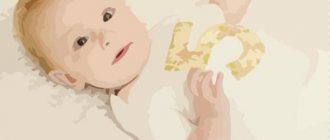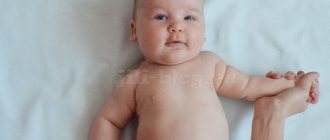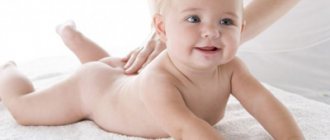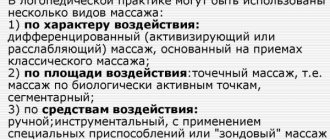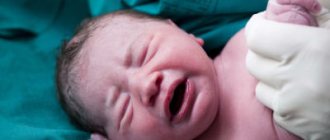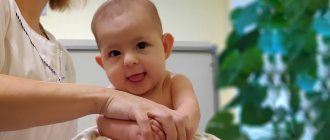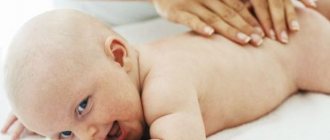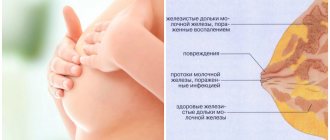All mothers know how important massage is for their babies. It strengthens the muscles and growing skeleton of a newborn, improves health, promotes the proper development of the child, triggers protective processes in the child’s body and thereby improves immunity and normalizes digestion. Also, a general massage for infants improves the mood and establishes contact between the baby and the parents.
Massage for a baby should be carried out not only technically correctly, but also in a certain place, at a certain time, with a positive attitude and in a comfortable environment. You will learn about all this and more from our article.
The best place for procedures
First you need to decide on the place where you will constantly massage your baby. You need to choose the warmest room in the house, because babies freeze very quickly, faster than adults. This room must be ventilated before the procedure. Place the changing table or any other convenient table away from drafts (windows and doors). Lay an oilcloth, a blanket and a diaper familiar to the baby on it to make it more comfortable.
Next to the massage table you need to place an additional cabinet or high chair, on which all the necessary items will lie: another diaper, oil, diaper, powder, cream, timer, and so on.
Preparing for a massage
What preparatory procedures are recommended:
- The baby should be healthy and feel good. Monitor his mood - he should be cheerful and rested.
- Before carrying out the procedure, you need to ventilate the room well. The most suitable temperature range is from 18° to 22° C.
- A changing table covered with a diaper is suitable for the session.
- Carry out the procedures at the same time, maintaining an interval of 40 minutes after eating, and it is best to complete the procedure by bathing the baby.
- Pay special attention to the fact that the fingernails should be cut short, as the baby's skin is delicate and can be easily injured.
- Remove all jewelry and warm up your hands by rubbing your palms together.
- You can use oil or baby cream, which should be applied to your hands.
- Turn on quiet music, smile and talk to your baby more often. You can learn children's poems that will cheer up your little one.
Desirable time for massage
Pediatricians warn that restorative massage for infants should not be done immediately after feeding. Some time must pass (about 15-20 minutes) for the child to have time to release air (burp), otherwise there is a risk that he will choke during the massage.
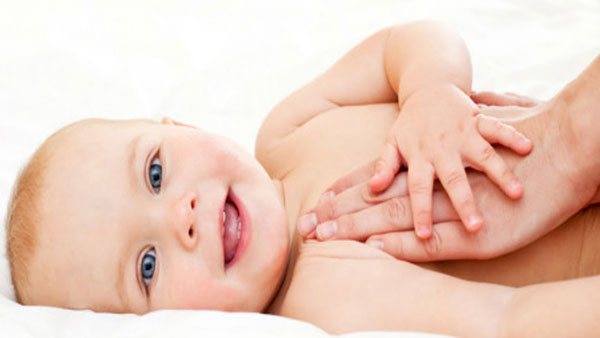
In general, it is recommended to massage your infant twice a day: in the morning after using the toilet and in the afternoon, just before meals, for about 20 minutes.
It is worth noting that many experts believe that massage on an empty stomach will only cause harm. And if the child has eaten, then the exercises can be done an hour after feeding. Different specialists have different views on massage, so you yourself should listen and take a closer look at your child: exactly when he is comfortable with the exercises, when he is more often in a good mood and how he feels 20 minutes after feeding.
All experts agree that you should not do a tonic massage just before bedtime, otherwise the nervous system will be overexcited and the child will stay awake for a long time.
Difference from other techniques
The appointment of a general massage by a pediatrician should not frighten parents . This does not mean that the child has serious health problems, but this doctor’s recommendation should not be ignored. Systematically performing various manipulations with the baby’s body helps him quickly begin to roll over while lying down, crawl, sit and walk.
General massage is also called preventive. It is aimed at maintaining the correct development of the body and does not affect any specific point. It differs from therapeutic and correctional in that the procedures can be carried out by one of the parents who does not have a medical education. It takes 15-20 minutes a day for 10 days.
General principles of massage
There are two types of massage for babies: general massage for infants and therapeutic.
Principles of general massage that can be done at home:
We recommend reading: How to properly hold a newborn baby
- Newborns must be handled very carefully, all movements must be done smoothly and gently, without pressure. Move the baby’s arms and legs carefully so as not to damage the still fragile bones and weak ligaments;
- before starting the procedure, be sure to wash your hands with soap and remove all jewelry;
- movements must be made along special massage lines. Try to ensure that your hand movements coincide with the rhythm of lymph flow. Hands should always be warm so as not to cause discomfort to the baby. Do everything without strong pressure, avoiding the area of the spine, liver, heart;
- if you want to stroke your belly, do it only clockwise;
- It is advisable not to massage in silence. You can, for example, sing, tell fairy tales or poems, or you can turn on classical music or children's songs.
- A full massage is given to the baby no more than once a day. Everything else can be light stroking of the back or tummy;
- Usually a course of massages is given to an infant in 10 sessions of 5-15 minutes each. You cannot skip the session, especially if you have already taken the course. Moreover, if the doctor said that such procedures are indicated for the child, and the parents did not start doing them on time, then in the future this may negatively affect the baby’s health.
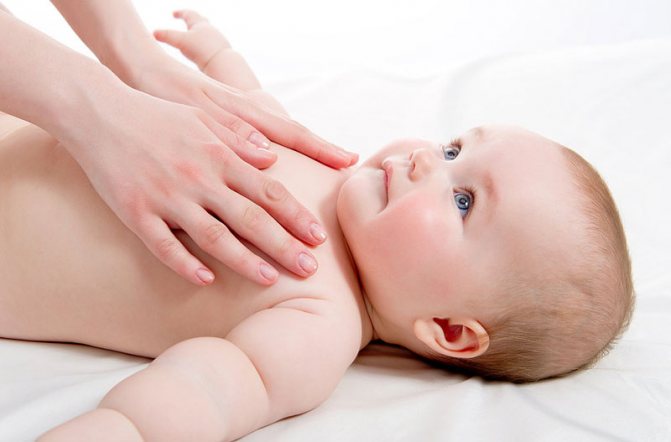
It is a general massage that parents can do themselves at home.
Relaxing massage - performed on infants
A relaxing, soothing massage for newborn babies and infants should relieve not only muscle tension, but also excessive emotional arousal, which is necessary for the development of the most important body functions.
Benefits of a relaxing massage
The ability to provide a relaxing massage for infants is a valuable skill for parents. It has virtually no contraindications and can be carried out at home, in an environment familiar to the child, which does not cause him anxiety. A set of simple and painless exercises aimed at eliminating muscle hypertonicity:
- will help the child quickly master his own body during a period of intensive development;
- will have a positive effect on the functioning of the heart, digestive and respiratory systems;
- improves blood circulation;
- stimulates epithelial renewal.
The effect of the procedure will be enhanced by using special oils that soften and moisturize the baby’s skin. Regular long walks in the fresh air and sleep patterns will help to consolidate the results.
Indications and contraindications
A relaxing massage for infants is indicated even for completely healthy children. This is a good way for an infant to interact with a significant adult and become aware of the boundaries of their body. But there are a number of direct indications, including:
- a lag in physical and emotional development of more than a month from the recommended norms;
- problems with the digestive tract, weak peristalsis;
- chronic respiratory diseases outside the period of exacerbation, incl. chronic bronchitis, bronchial asthma.
Before deciding on a course of procedures, it is necessary to take into account contraindications. You should refrain from massage in the following cases:
- acute respiratory diseases;
- three to four days after vaccination and one to two days before it;
- any diseases accompanied by purulent processes;
- severe diseases: heart defects in the stage of decompensation, tuberculosis of the lungs or bones, acute arthritis, hemophilia;
- increased body temperature and enlarged lymph nodes of any origin;
- low body weight;
- congenital or acquired hernias;
- age up to 1 month. For newborn babies, it is better to replace a relaxing massage with simple strokes.
It is also recommended to postpone the course if the baby has recently experienced a significant change of environment - moving), separation from a significant adult, introduction of complementary foods or cessation of breastfeeding, even if he does not show anxiety.
Relaxing massage
For hypertonicity of the muscles of the legs and arms, a massage complex is indicated even in the first month of life, but its implementation should be entrusted to a specialist familiar with the techniques and features of working with the youngest patients.
The rules for massage for newborns with severe hypertonicity include working with each muscle, taking into account its location and functions, as well as dynamic monitoring by the attending physician with possible course correction.
If hypertension occurs due to neurological problems, massage is combined with drug treatment, electrophoresis, paraffin wraps, therapeutic swimming and relaxing baths.
In other cases, any careful and attentive person can cope with a relaxing massage.
Preparation
Recommendations and rules for massage also apply to preparation. For the complex to be effective, you need to take care not only of the correct algorithm of movements, but also of creating a peaceful environment for a relaxing massage:
- Doctors recommend carrying out the procedure every day at the same hours; it is best to schedule the time during daylight hours, half an hour after meals and half an hour to an hour before bedtime.
- The surface on which the massage is performed should be spacious enough, warm and pleasant to the touch. The table should be covered with a blanket folded several times, an oilcloth and a large soft diaper should be placed on top of it.
- The room should be well ventilated, without drafts, air temperature – 21-25, humidity – 50-70%.
- Play calm classical music quietly and, if possible, remove sources of bright light and annoying noise.
Massage should be done with warm hands lubricated with massage oil. It is best to use olive oil, petroleum jelly, or grapeseed oil to reduce the risk of allergies.
Step-by-step instruction
We begin the massage with wide, slow stroking of the child’s legs and arms. Remember that a relaxing massage for a baby is necessary not only for physical, but also for mental development, therefore, while touching, you can and should talk to him, name parts of the body, if possible, look him in the eyes and smile.
After stroking, proceed to the following elements:
- Using gentle stroking movements, massage the child's face, moving from the forehead through the cheekbones to the chin. Lightly rub your earlobes;
- Stroke your belly clockwise;
- Cross your baby's arms over your chest, then spread them apart. Repeat 5-7 times;
- Pull the baby's legs towards the stomach, bending them at the knees, then straighten them. This exercise must be repeated 5-7 times, overcoming resistance smoothly, with minimal pressure;
- Turn the baby onto his tummy. Tap your fingertips over the entire surface of your back and buttocks, trying to ensure that the muscles are in a relaxed state by the time you begin performing the next element;
- Using your thumbs, massage the areas along the spine, moving up and down several times. Avoid applying strong pressure during this procedure;
- Do light vibrating shaking, placing your palms first on your shoulders, then on your back, buttocks and arms;
- Stretch your foot, then lightly massage your baby's legs one at a time, grasping them with both hands.
The entire soothing massage procedure before bed should take no more than 15 minutes for children in the first months of life and no more than half an hour for toddlers older than six months. After finishing the exercises, let your child play for a few minutes.
Sleep after massage
Throughout the course, you need to monitor the state of the baby’s nervous system: if the child does not sleep well at night after a massage, the intensity of the exercises should be reduced.
In this case, it is useful to bathe the baby in a bath with the addition of chamomile decoction before going to bed. If, in your opinion, the child sleeps for too long after the procedure, you need to consult a pediatrician.
Most likely, this is a variant of the norm - the baby needs not only to recover from stress, but also to absorb new impressions in his mind.
Giving a massage to a newborn is one of those pleasant chores that fill the life of parents of a baby. Considering all the features of a relaxing massage for various problems, you can help your child overcome them, enjoying not only the result, but also the process itself.
Relaxing massage - performed on infants Link to main publication
Source: https://FiguraDoma.ru/massazh/dlya-mam-i-detej/rasslablyayushchij-massazh-dlya-grudnichkov.html
Massage for all muscle groups
The procedure can be divided into several stages: massage of the arms, legs, tummy, back, thighs.
Hands. Start your massage with the simplest thing - general stroking of the child's hands. This will set the baby up for further exercise and give him the opportunity to relax. Place your index finger in your child's hand and begin stroking with your other hand from the shoulder to the hand. Repeat the movement 5 times. Now you can put the baby on your stomach and repeat the exercise.
Legs. To strengthen your leg muscles, work on your knees and feet. Take the child's foot in your hand and with the finger of your other hand draw an infinity sign - from the heel to the toes and back. Next, stroke the legs completely, carefully going around the knee joint. Repeat the exercises 5 times.
Stomach. For this exercise, you can lightly lubricate your hands with oil and start by lightly stroking the sides, and then move on to clockwise circular movements. Don't use force, everything should be light and gentle. To help your navel heal better, you can draw a circle around it with a bent finger several times.
Hips. Lay your newborn on his back, take his legs in your hands, bend his knees and gently press him to his tummy. Now you need to carefully spread your legs to the side. This exercise prevents dysplasia.
Back. Exercises are necessary to strengthen the back and achieve correct posture in the future. Place the baby on your stomach. Stroke the back, starting from the neck and smoothly moving to the buttocks. Then you need to stroke in the direction from the spine to the barrels. Lightly massage the shoulders.
The baby can also be placed in the fetal position, which he still remembers and loves. To do this, you need to hold the baby’s feet and arms with one hand, and with the other, supporting the neck, tilt the head towards the chest. Now you can rock the baby slightly. The exercise, by the way, will help calm the child if he cries or is capricious.
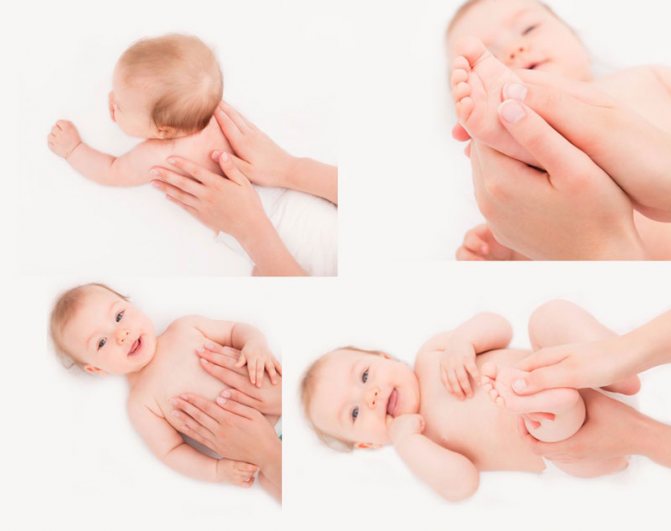
During the massage, you should never use force so as not to injure the baby.
If you want to relax your baby before bedtime, set him up in a calm mood, then it is better to do light and measured stroking, do not talk to the baby, do not rub him and do not turn him over often.
It is advisable to have a fitball at home. For example, in the afternoon, when you do a massage, you can complete all the exercises by rolling on a large soft ball. This strengthens the vestibular apparatus, abdominal and back muscles. To do this, you need to place the baby on the fitball with its stomach and, holding it by the legs, roll it back and forth, left and right, and in a circular motion. You can lightly tap the ball so that the child feels a slight vibration.
Toning and restorative
Head
Move the index fingers 5-6 times from the center of the forehead to the temples and cheeks. Gently knead the baby's ears .
Neck
The cervical region experiences heavy loads in the first months of life. The reason for this is the baby’s inability to hold his disproportionately large head.
- Lying on your stomach, use stroking movements to relax your neck muscles.
- As if pinching, walk from the shoulder girdle up the neck, grabbing the scalp. Duration 1-1.5 minutes.
- Place your hand under the baby's chest, let him lean on his arms and stretch out his head. Repeat 2-3 times.
- Relax the neck muscles with stroking.
- Place the child on his back and massage his neck from shoulder to chest, drawing an invisible cross with both hands 5-6 times.
Most children do not like neck massage, so overload is inappropriate during the first procedures.
Breast
- Without pressing, smoothly and gently stroke the chest from the center to the shoulders and ribs.
- Then use your fingertips to massage the intercostal area.
- Using your thumbs, moving from the center to the sides, rub 5-6 times along the diaphragm.
- Stroke the chest.
When working with the breasts, do not touch the mammary glands.
Hips and buttocks
Massaging your thighs and buttocks is useful for preventing hip dysplasia.
- Rub the child's thighs from the outside using stroking movements. Do not touch the areas inside the thigh, near the genitals. Duration: 2 minutes for each side. An adult's hands should glide over the skin and not cling to it.
- Bend one of the child’s legs at the knee and leave the other extended. Roll the bent leg around the hip joint 7 times clockwise, then back. Repeat the same with the second leg.
- Bend your legs, lightly press them on your stomach and spread them apart. This exercise is called the “book” and is a prevention of hip dysplasia.
- The buttocks are massaged with your thumbs, using smooth movements from bottom to top, from the center to the outside of the thighs.
- Place the child on his left side and stroke his back upward from the buttocks 3 times. Repeat on the right side.
Massage for babies with hypertension
Procedures for infants with muscle hypertonicity are somewhat different from the simplest general massage. Hypertonicity in a child is very easy to recognize; there are several signs:
- the baby cries often;
- reacts nervously to familiar sounds;
- the child constantly spits up after feeding;
- a newborn already holds his head well from birth;
- the baby constantly clenches his legs and arms;
- Frequently arches or throws back the head, especially when crying.
To relieve hypertonicity, special exercises are used during a massage session. The “cradle” exercise is very useful. The child needs to be placed with his back on the changing table, put his hands under his head and back, lift him and rock him a little in different directions. Now you need to slightly move your hands to the child’s lower torso and also rock a little. You can also take the child by the armpits and gently rock him towards you and away from you.
For hypertension, rubbing is also used. For example, so-called piston rubbing is necessary for the arms and legs. You need to put your hand or feet between your palms and rub it in one direction or the other. Don't use force, do it lightly, without pressure.
Shaking is necessary. Place your finger in your child's hand, move it slightly to the side, and shake it very lightly while supporting the handle with your other hand.
But what you cannot do with hypertonicity is to use clapping and chopping movements; on the contrary, they will only increase tension.
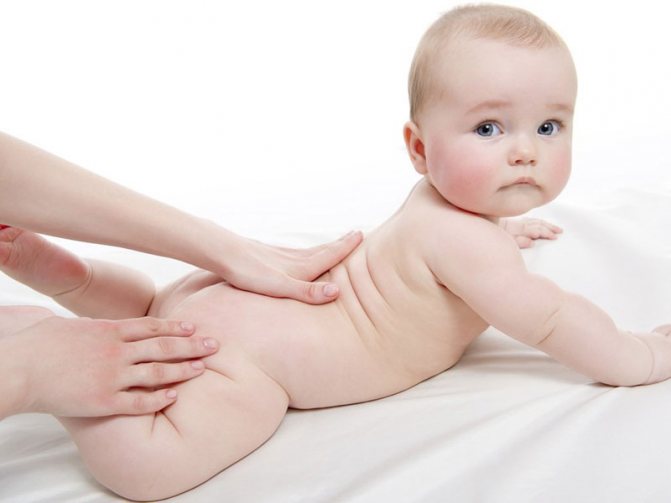
Please note that if the child is 6 months old or older, and signs of hypertension are still observed, then you must consult a doctor and tell about all the symptoms
Hypertonicity can affect the development of a child and provoke:
- disturbance in movement coordination;
- formation of abnormal gait;
- the appearance of speech problems;
- developmental delays and other health problems.
In addition to therapeutic massage, doctors prescribe other procedures - electrophoresis, heat therapy, physical therapy, swimming and even drug treatment. But all this depends on the age of the child, his condition, and concomitant diseases. Therefore, under no circumstances prescribe any medications or procedures yourself.
What you need to know about acupressure for insomnia
The massage begins with warming up the hands and finding the desired point. If it is determined correctly, there should be a feeling of numbness and aching. Manipulation is performed with the pads of the thumb, middle or index fingers. For asymmetrical points, the fingers of the right hand are used. Symmetrical points are massaged alternately with both hands.
Acupressure for insomnia begins with kneading the skin. Then the fingertip touches the point and is screwed into the body tissues with penetrating smooth rotational movements. The pressure should increase gradually until slightly painful. It is necessary to ensure that the finger does not move from the acupressure point and is perpendicular to the surface. The finger presses on the tissue for several seconds (5-7) and slowly returns to its original position, as if unscrewing it back. The pad is not removed from the massaged area and after a few seconds the cycle of screwing in and unscrewing is repeated.
Sleepy points are massaged 3 to 5 times at short intervals.
The duration of manipulations on one zone is 2-3 minutes. When massaging a person should not experience any unpleasant or painful sensations. Exposure should be stopped if the heartbeat accelerates, nausea, or sweating appears. Circular rotations can be performed in any direction, but Japanese experts claim that they calm rotational movements counterclockwise. In the first days, it is advisable to limit yourself to two or three points and reduce the time for the procedure in order to understand how the body reacts to acupressure.
Not everyone can do acupressure.
Main restrictions:
- high body temperature;
- vascular diseases;
- wounds, rashes, damage, burns on the skin;
- benign and malignant tumors;
- acute inflammatory processes;
- thrombophlebitis (you cannot massage the sleepy points on the foot).
The benefits of standard massage for children
A general tonic massage for newborns is not only pleasant, but also useful:
- massage helps improve metabolic processes;
- activates performance;
- helps to concentrate attention;
- relaxes the baby;
- relieves unhealthy drowsiness;
- improves the functioning of the cardiovascular system;
- stimulates brain function.
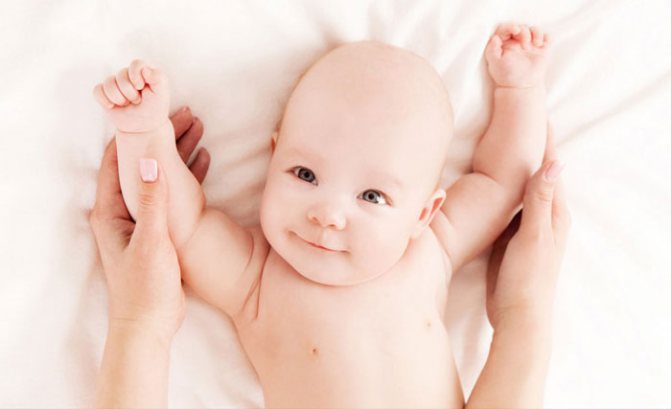
In addition, massage promotes the proper development of the child’s musculoskeletal system, helps prevent various diseases and strengthens the baby’s connection with his parents.
Types and techniques of massage

Orthopedic massage for flat feet has a beneficial effect on the condition of the spine
The principle of performing a massage for children is the same as for adults, but the movements should be more delicate and careful. The main types of massage include:
- medicinal;
- orthopedic;
- general or classic;
- point;
- emendic;
- drainage or percussion;
- dacryomassage.
Treatment is prescribed when any pathologies are detected in the child. The disease is treated conservatively; a massage procedure is recommended as an additional effect. The technique is simple, but it is better to complete the full course of the procedure in a children's clinic or call a massage therapist at home, especially if we are talking about a newborn child. Medical therapeutic massage is prescribed for neurological pathologies and some diseases of internal organs.
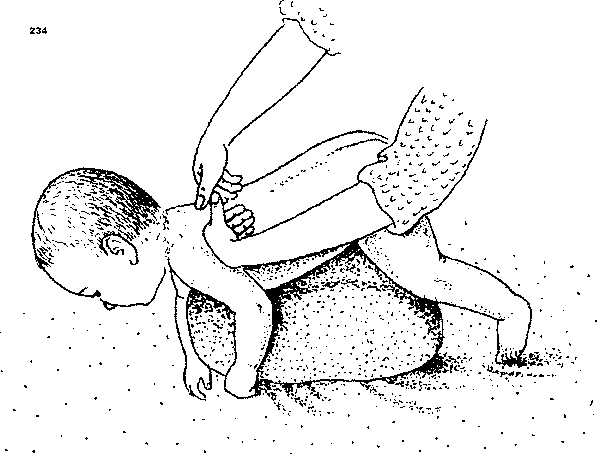
Drainage massage is necessary for the removal of sputum in infants who cannot sit
Orthopedic is the most common because it is used for problems with the musculoskeletal system: flat feet, poor posture, congenital pathologies, injuries received during childbirth, as well as torticollis and foot deformities. Massage is also indicated for a child to strengthen the back muscles. The course should be conducted by a specialist or parent under the guidance of a massage therapist.
The classic type of massage is otherwise called general or restorative. The procedure can be done at home; there is no age limit. It can be performed by parents after training by a specialist. The massage technique relaxes and tones the child’s body. It is recommended for those children who often suffer from colds, have a weakened immune system, are easily excitable or are inhibited due to neurological problems.
Acupressure is more popular in eastern countries, but it has proven itself well all over the world. The massage therapist’s hands act on the points that are responsible for certain organs on the back and other parts of the baby’s body. It is not recommended to do it yourself, as you need to have knowledge about acupuncture.
The emendic type of massage is little known, as it refers to complex methods of manual influence, which not all massage therapists can do. The specialist must have knowledge about biologically active points on the child’s body. The correct technique will improve the outflow of lymph, which will allow the body to cleanse itself. This type of massage cannot be performed independently at home.
Drainage massage is necessary when it is difficult to treat colds, in particular cough. The technique is simple, parents can do it on their own. The procedure will help improve sputum discharge, cope with a wet cough and weaken it.
When not to massage
Here is a list of some contraindications and cases when it is not recommended to massage a child:
- if the baby is less than 20 days old;
- if you observe a child with indigestion;
- Do not massage if your baby has an infection. The baby’s body will be busy fighting it;
- if a baby has a rash, prickly heat, or redness on the skin, then it is better to refrain from massage;
- when the child has a fever;
- the presence of any exacerbations or allergies;
- heart disease, circulatory disorders;
- if the child has a large hernia;
- liver or kidney dysfunction;
- the presence of a disease that makes bones brittle;
- if you notice that your son or daughter is capricious, then do not insist on a massage;
- if you yourself are irritated, feel tired, and anxious, then it is also better to postpone this event.
General massage for infants is always pleasant, useful, necessary and irreplaceable in the early stages of a child’s life. You can always do a massage at home with your own hands, giving your baby joy and care, affection and protection. The simplest and lightest strokes of mother's hands can work wonders. If you are still afraid to do a general massage yourself, then it is better to entrust the procedure to a professional. He will massage your baby with you, tell you the subtleties and rules, and teach you how to hold the baby correctly during the session.
Contraindications
Despite the benefits of preventive massage, there are factors that make it worth postponing the procedure :
- less than 20 days have passed since birth;
- elevated temperature due to a cold or overheating;
- presence of diaper rash or rash;
- disruption of the digestive system;
- inflammatory processes;
- routine vaccination (vaccinations);
- congenital pathologies;
- capricious state of the child;
- nervous mood or fatigue of the mother.

